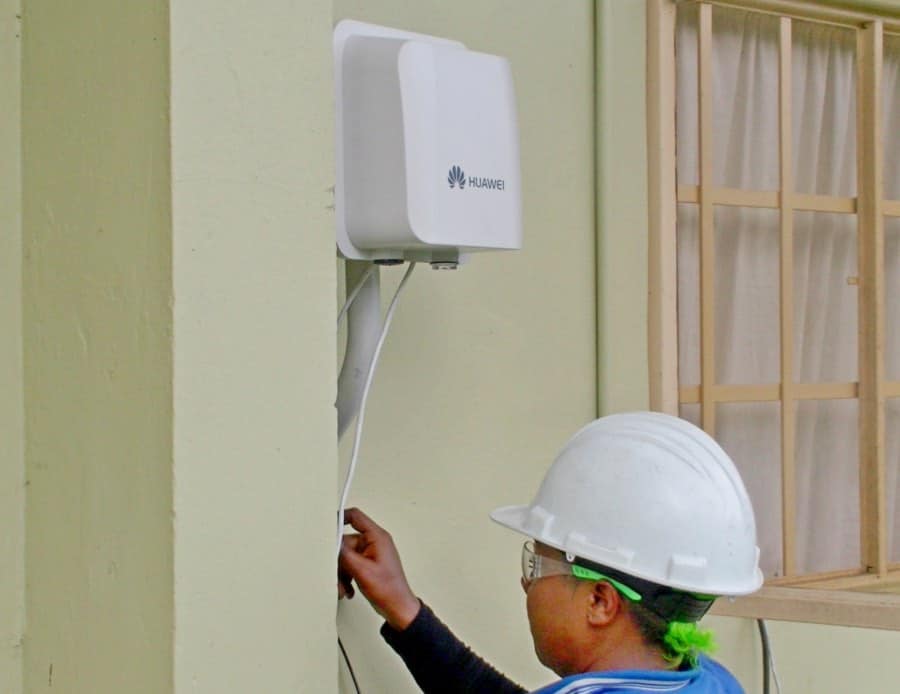
Above: External antenna installations extend the range of WTTx coverage for remote communities. Photo courtesy TSTT.
Last October’s historic floods will be remembered for the trauma and destruction in many areas that had never seen that level of floodwaters before. The more lasting memory however will be the opportunity this tragedy provided to the country to set aside differences and rise to the aid of our fellowman.
This also has happened in the technological sphere with bmobile providing WiFi in Relief Centres and the mobile network being used by disaster management and protective services to provide real-time updates and advice to the public.
A new story emerging out of the devastating floods was bmobile’s response to its copper infrastructure in St Helena being severely damaged. In the aftermath of the floods, residents were left without landline, Internet and TV service for an extended period while flood waters subsided and then while critical communications equipment had to be replaced.
This circumstance gave bmobile a unique opportunity to make St. Helena the first and largest community deployment of its new 5G-ready WTTx wireless broadband solution that had been recently launched by TSTT CEO Dr. Ronald Walcott as part of the company’s Zero Copper campaign.
Like many other communities, communications services for homes in St. Helena are provided by copper lines. As Dr Walcott mentioned, copper is an old technology that does not allow bmobile to serve customers with services that can be rapidly deployed, easily installed and support multiple products. That is the cornerstone of being the agile broadband communications company that is on bmobile’s roadmap for transformation.
Given the extent of the damage to bmobile’s copper infrastructure in St. Helena, TSTT made the decision to fast-track the deployment of WTTx fixed wireless broadband technology to customers in the community; this will eventually lead to all copper lines being removed in St Helena.
bmobile teams reached out to affected households with disrupted services and began replacing their old copper connections for new wireless broadband systems. These installations did not require any lines to be run to connect a home to the telephone exchange so the installation process was much faster and customers could continue to readily enjoy their landline, Internet and multimedia services.
The ability to provide this modern infrastructure so quickly after the catastrophic damage to the community, is a major advantage to bmobile moving away from traditional copper technology to wireless broadband. It is also advantageous for rural communities where, the time and cost associated with running miles of cables across unpopulated sections of the route can make the service vulnerable to environmental and human factors.
bmobile’s Zero Copper program will see over 5000 KM of copper cables being removed and several hundred thousand households benefitting from a more efficient wireless broadband solution to suit their modern communications needs.


Well I’m glad that St. Helena got back service- too bad Cleaver Heights in Arima which never even had copper line, still don’t have any Fibre lines from TSTT nor ANY other provider- in other words absolutely no Internet service whatsoever still doesn’t have even wireless/ WTTx to compensate.